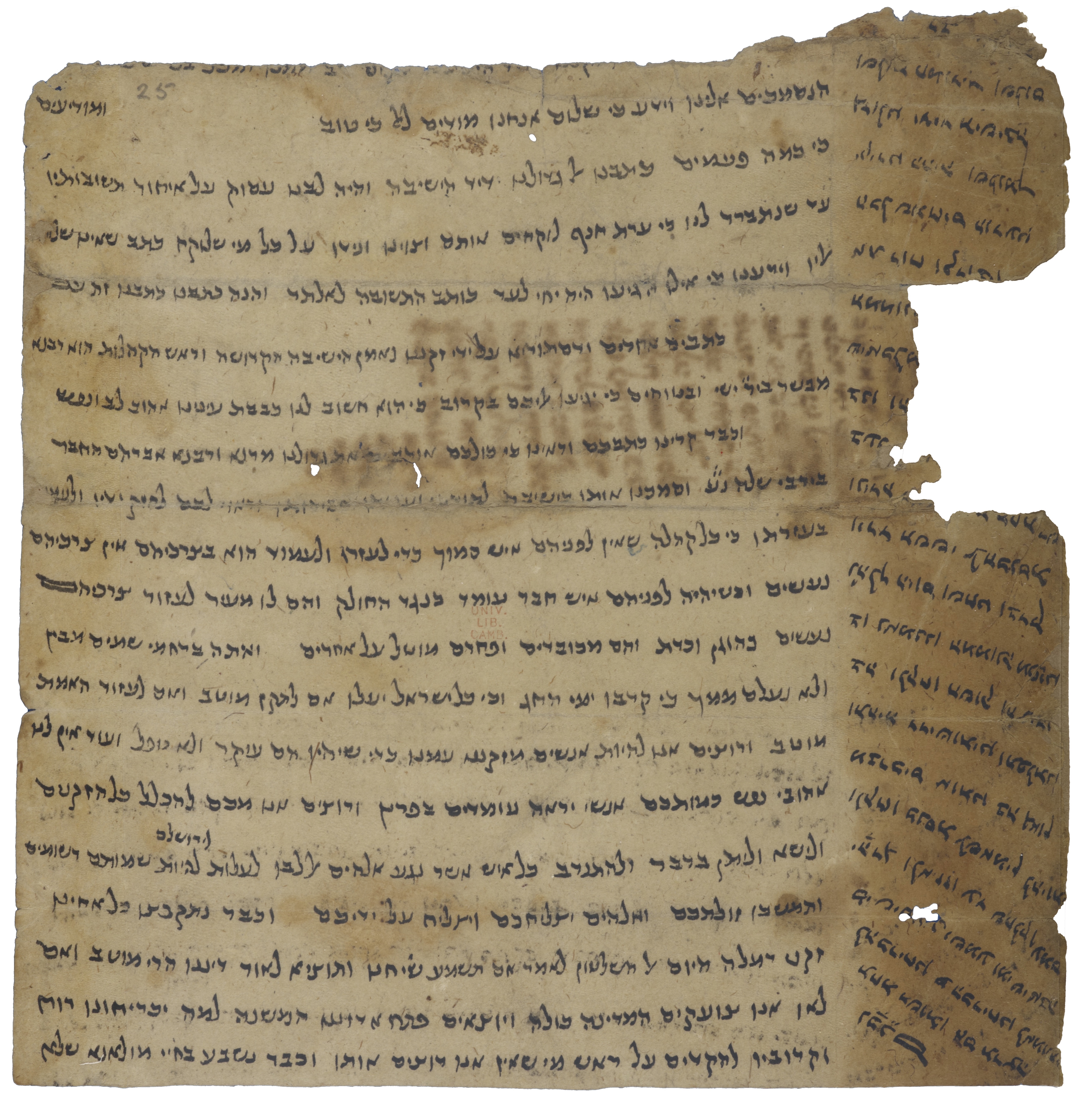Throwback Thursday: Use of Hebrew in Genizah letters

T-S 10J9.25 (recto): letter from Nathan b. Abraham, urging his supporters to be in Jerusalem for Sukkot, lest their party be underrepresented.
Thu 7 Oct 2021
Our Throwback Thursday this week is taken from issue 42 of the printed edition of Genizah Fragments, published in October 2001, by Ben Outhwaite.
“Many times have we written to our distinguished one, beloved of the academy, and our heart was preoccupied with the lateness of his replies until it became clear to us that the ‘godless congregation’ had been taking them.” So writes the scholar Nathan ben Abraham to a supporter during his protracted struggle to take control of the Yeshivat Ha-Sevi – the Palestinian Academy – from its head, the Gaon Solomon ben Judah, in the second quarter of the eleventh century. The words show the extremely bitter rivalry and distrust that existed between Nathan and supporters of the incumbent Gaon. They also demonstrate the importance attached to letters as a means of communication and a tool of political machination. As fascinating as the content of these letters is, the medium itself is of considerable interest. Most letters preserved in the Genizah are in Judaeo-Arabic, the written version of the Jewish vernacular in the Genizah world; but there are a significant number, such as Nathan ben Abraham's, that are composed entirely in Hebrew, a virtually dead vernacular but a language ever-present in the cultural life of the Jewish community. It was studied by every educated Jew and, in particular, cultivated by the scholar. Its regular oral use is, however, assumed to be confined to the synagogue, and poetry appears to have formed the bulk of literary composition. The Hebrew letter, though, shows that the holy language could still function beyond a limited literary-liturgical sphere. Eli, “the Expert”, ben Abraham, on the run from prison, uses Hebrew when he writes a short note arranging a meeting; Samuel ben Moses acknowledges receipt of a money-order; Solomon ben Judah discusses midrashim, laments his growing infirmity and expresses heartfelt wishes against his opponent, yemito ‘el, “God kill him”. The Hebrew letter is employed for all these subjects, and many more. In one field, though, Hebrew is particularly sparse. The Genizah has turned up many of the business letters of Jewish merchants and these are written in Judaeo-Arabic. It may be argued that the reason these letters were not composed in Hebrew is that the language was simply not up to the task; that, as a predominantly literary-liturgical idiom, Hebrew lacked the correct terminology for describing the commercial activities of the “modern” world. Certainly, to describe adequately in a Hebrew letter all the required items would have involved dredging up obscure words, coining new ones or inserting many Arabic terms. We do, however, find that Hebrew was adequate for similar tasks in non-commercial correspondence, as, for example, in discussing the ever-present and burdensome poll tax or the sometimes complex matters of inheritance, without ever needing to fall back on foreign – that is, Arabic – terms. A more convincing explanation is therefore that the difference in usage between Judaeo-Arabic and Hebrew was between the communicative need and the aesthetic. The Judaeo-Arabic letter was utilitarian, its language transparent; for the Hebrew letter, to a certain degree, “the medium is the message”. This may be an oversimplification, but in broad terms it goes some way to explaining the situation obtaining in the Genizah letters. The choice of Hebrew or Judaeo-Arabic was not so much the ability of the language itself but the perception of it. Style was important, no matter what language was employed. Letter-writers who were rushed, ill or simply modest can be found apologizing for their stylistic shortcomings, whether writing in Hebrew or Judaeo-Arabic. Nevertheless, well-written Arabic letters, though impressive, could never match, in the scholarly eyes of the Jewish community, the language of the Torah, the first language. Without a doubt, it was easier for a writer to produce a letter in the vernacular than in Hebrew. Where there were familiarity and little need of formality – as between close family members, for instance – Judaeo-Arabic predominates. Solomon ben Judah always writes to his son in Judaeo-Arabic, and the letters lack the florid openings or succession of praises which generally characterize more formal missives. But, when the Gaon corresponds with senior dignitaries of the Egyptian Jewish communities, it is usually in ornate letters written in Hebrew. There is not necessarily any difference in the subject matter of the letters, but, as the most senior religious authority in the land, it was important for him to demonstrate his erudition. Moreover, since his position was at times extremely precarious, it was necessary to show what was perceived as proper respect to his powerful supporters and potential allies. The businessman, on the other hand, had little need of aesthetics. His commercial agent or business partner was impressed by his business acumen rather than his Hebrew prose style, and this was most easily expressed in Judaeo-Arabic. Thanks to the scholars, the judges and the educated layfolk, Hebrew remained a communicative medium throughout the Genizah period.What happened next? When Ben wrote this article back in 2001 he was but a beardless youth. Since 2006 he has been Head of the Genizah Research Unit, and he celebrated his 50th birthday last month.

Add new comment